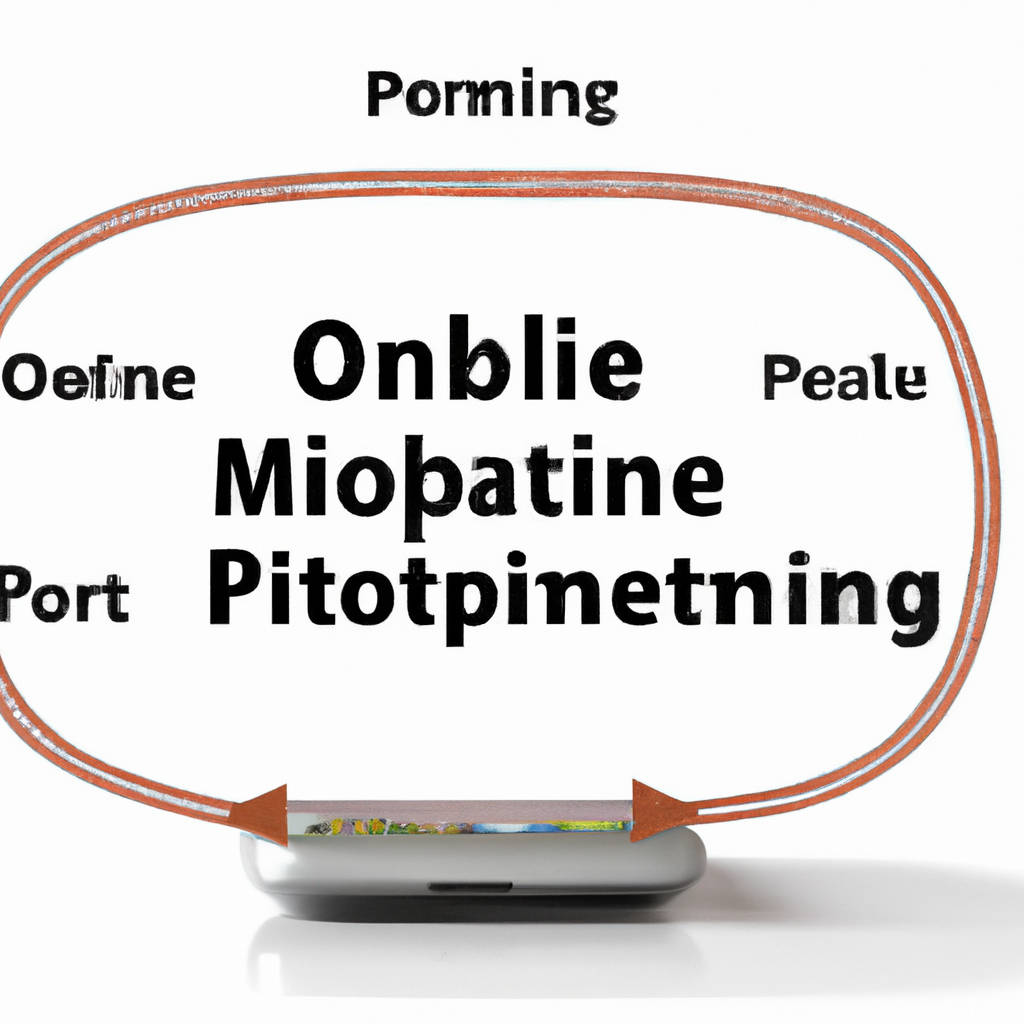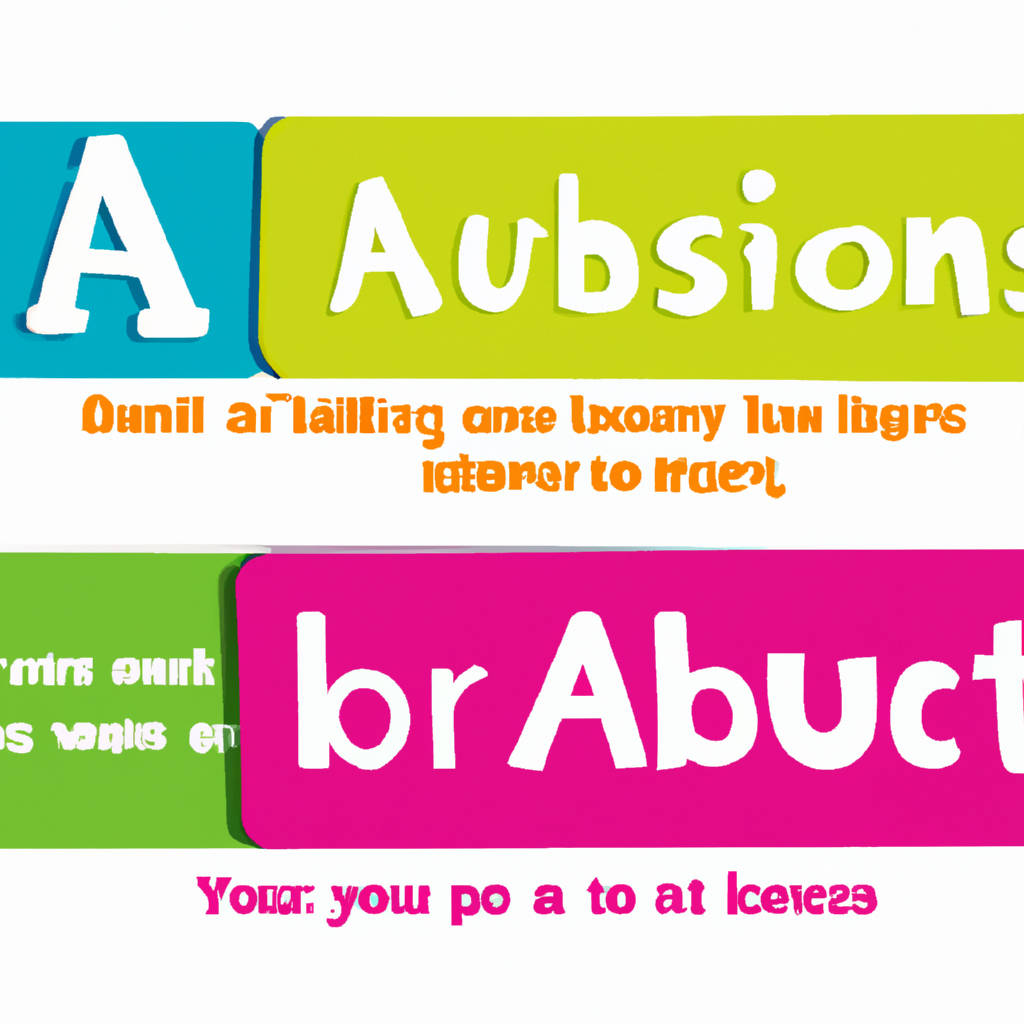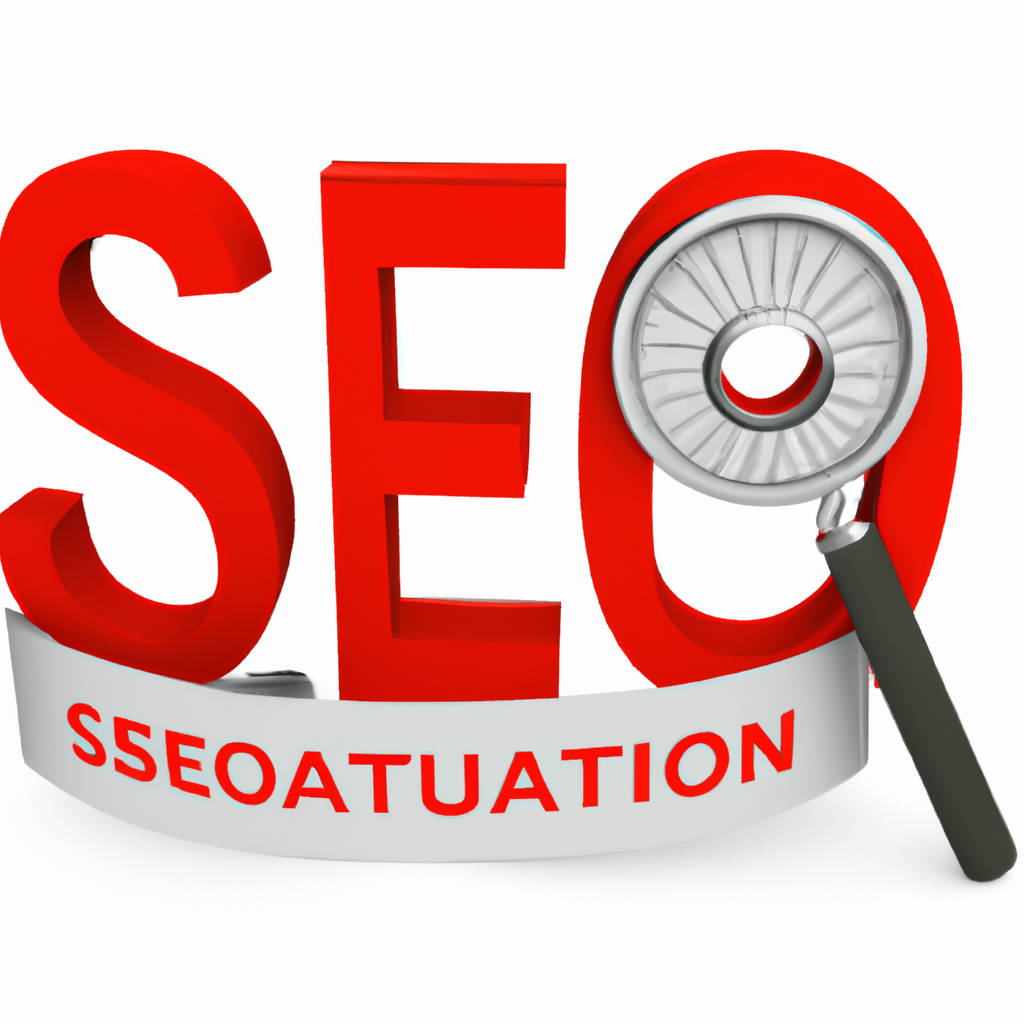Small business websites are essential tools for reaching customers and growing a business in today’s digital world. In order to ensure success, there are several key features that must be included in a small business website. One essential feature is a user-friendly design that is easy to navigate and provides a seamless browsing experience for visitors. A clean and professional design will help instill trust in potential customers and make it easier for them to find the information they are looking for.
Another important feature is mobile responsiveness, as more and more people are accessing websites on their smartphones and tablets. Ensuring that your website is optimized for mobile devices will help reach a wider audience and improve the overall user experience. Additionally, having clear and concise content that highlights the products or services offered by the business is crucial. This includes using high-quality images and well-written copy that effectively communicates the value proposition of the business.
Another essential feature is a call-to-action, which prompts visitors to take a specific action such as contacting the business, making a purchase, or signing up for a newsletter. Including a call-to-action on each page of the website can help drive conversions and generate leads. Finally, it is important to have a reliable hosting provider and secure website to ensure that your site is always up and running smoothly. By incorporating these essential features into a small business website, you can create a successful online presence that helps attract customers and drive growth for your business.

The Importance of Having a Business Website
Having a business website is crucial in today’s digital age as it serves as a virtual storefront for your company. It provides a platform for potential customers to learn more about your products and services, as well as a way for current customers to stay engaged and informed. A website can help establish credibility and professionalism for your business, making it easier for customers to trust and connect with your brand.
Additionally, a website can significantly expand your reach and visibility, allowing you to reach a global audience and attract new customers from all over the world. Furthermore, having a website allows you to easily showcase your products and services, making it easier for customers to make informed purchasing decisions. Overall, having a business website is essential for staying competitive in today’s market and for effectively reaching and engaging with customers. It is a powerful tool for growing your business and establishing a strong online presence.
1. Intuitive Navigation
Intuitive navigation refers to the ease and simplicity with which users can move through a website or application without any confusion or frustration. When a website is designed with intuitive navigation in mind, users are able to quickly and effortlessly find the information they are looking for. This is achieved through clear and logical organization of content, intuitive menu structures, and easily recognizable navigation elements such as buttons and links.
By ensuring that users can easily navigate through a website, businesses can increase user satisfaction and engagement, leading to higher conversion rates and improved overall user experience. Intuitive navigation also plays a crucial role in driving traffic to key pages and ultimately achieving business goals. When users can easily find what they are looking for, they are more likely to stay on the site longer, explore more content, and ultimately take the desired action, whether it be making a purchase, signing up for a newsletter, or filling out a contact form.
In today’s digital age, where users have a multitude of options at their fingertips, intuitive navigation is essential for businesses to stand out from the competition and retain loyal customers. By prioritizing intuitive navigation in website and application design, businesses can create a seamless and enjoyable user experience that keeps users coming back for more.

Streamlined Menu and Layout
A streamlined menu and layout can greatly enhance user experience on a website or app. By presenting information in a clear and organized manner, users are able to quickly find what they are looking for without getting overwhelmed by cluttered design. A streamlined menu eliminates unnecessary options and focuses on the most important features, making it easier for users to navigate and make decisions. This not only improves the overall usability of the platform, but also increases user satisfaction and engagement.
Additionally, a clean and simplified layout ensures that the user’s attention is directed towards key content and actions, leading to a more efficient and enjoyable user experience. By prioritizing simplicity and functionality in design, businesses can create a more seamless and intuitive experience for their customers, ultimately driving higher levels of engagement and conversion. In today’s fast-paced digital world, where users are inundated with information and choices, a streamlined menu and layout can be a powerful tool for businesses looking to stand out and create a positive impression on their audience. Ultimately, a well-designed and thoughtfully organized platform can make a significant impact on user engagement and success.
Visible Contact Details
Having visible contact details on a website or business card is crucial for ensuring that potential clients or customers can easily reach out for inquiries or assistance. By providing clear and easily accessible phone numbers, email addresses, and physical addresses, businesses can establish trust and credibility with their audience. This transparency also fosters open communication and builds a positive relationship between the company and its clients. Additionally, visible contact details can help in enhancing the brand’s visibility and recognition, as customers can easily refer back to the information when needed. It also allows for quick and efficient resolution of any issues or concerns that may arise, leading to improved customer satisfaction and loyalty. Overall, visible contact details serve as a practical and essential tool for businesses to connect with their target audience and provide excellent customer service. By making it easy for individuals to reach out and engage with the company, businesses can create a strong foundation for long-term success and growth.
2. Mobile-Friendly Design
Mobile-friendly design is essential in today’s digital age where the majority of internet users access content on their smartphones and tablets. A website that is not optimized for mobile devices can result in a frustrating user experience, leading to high bounce rates and decreased engagement. By implementing a mobile-friendly design, websites can ensure that users can easily navigate and interact with their content regardless of the device they are using.
This includes using responsive design techniques to ensure that the layout and content of the website adapt to different screen sizes and resolutions. Additionally, mobile-friendly design also takes into account factors such as load times, touch screen functionality, and easy access to important information. Overall, investing in a mobile-friendly design can help websites reach a wider audience, improve user experience, and ultimately drive more traffic and conversions. It is important for businesses and website owners to prioritize mobile-friendly design in order to stay competitive in the ever-evolving digital landscape.
Optimizing for Mobile Devices
Optimizing for mobile devices is essential for businesses looking to reach a wider audience and improve user experience. With the increasing number of people accessing websites and apps on their smartphones and tablets, it is crucial for companies to ensure that their online presence is mobile-friendly. This can be achieved through responsive web design, which allows websites to adapt to different screen sizes and resolutions.
By optimizing for mobile devices, businesses can improve their search engine rankings and attract more visitors to their site. Mobile optimization also involves ensuring fast loading times, easy navigation, and clear, concise content that is easy to read on smaller screens. Additionally, optimizing for mobile devices can help businesses stay ahead of the competition and provide a better overall experience for their customers. In today’s digital age, it is more important than ever for companies to prioritize mobile optimization in order to stay relevant and competitive in the market. By taking the time to optimize for mobile devices, businesses can increase their online visibility, attract more customers, and ultimately drive more sales.

3. About Us Section
The About Us section on a website or company profile is a crucial component in providing visitors with a better understanding of who the business is and what they stand for. This section typically includes information about the company’s history, mission, values, and team members. It serves as a way to establish credibility and build trust with potential customers or clients. By sharing the story behind the company’s founding and highlighting the individuals who make up the team, the About Us section humanizes the brand and creates a connection with visitors.
It also allows the company to showcase its unique selling points and differentiate itself from competitors. Additionally, the About Us section can provide insight into the company’s culture and work environment, giving potential employees a glimpse into what it would be like to work there. Overall, the About Us section plays a crucial role in shaping perceptions of the company and influencing decisions to engage with their products or services. It is an opportunity for businesses to communicate their identity, values, and vision to the world.
Key Components of an About Us Page
The About Us page is a crucial component of any website, as it provides visitors with essential information about the company or organization. There are several key components that should be included on an About Us page in order to effectively communicate the brand’s message and establish credibility with visitors. First and foremost, the page should provide a brief overview of the company’s history, including when it was founded and by whom.
This helps to establish the company’s credibility and longevity in the industry. Additionally, the About Us page should clearly outline the company’s mission and values, giving visitors insight into what the company stands for and believes in. Including information about the team behind the company can also help to humanize the brand and build trust with visitors. This can include brief bios and photos of key team members, highlighting their expertise and experience. Finally, the About Us page should include contact information, such as a phone number, email address, or physical address, so that visitors can easily reach out with any questions or inquiries. By including these key components on an About Us page, companies can effectively communicate their brand’s message and build trust with visitors.

4. Product/Service Showcases
Product and service showcases are a common marketing strategy used by businesses to highlight their offerings to potential customers. These showcases provide businesses with a platform to showcase their products and services in a visually appealing and engaging way. By showcasing their products and services, businesses are able to attract the attention of consumers and create a buzz around their brand. This can help to increase brand awareness and ultimately drive sales. Product and service showcases can take many forms, including trade shows, exhibitions, and online showcases.
These showcases allow businesses to demonstrate the benefits and features of their products and services, as well as engage with customers in a more personal and interactive way. By participating in showcases, businesses can gain valuable feedback from customers and gain insights into their preferences and needs. Overall, product and service showcases are an effective way for businesses to promote their offerings and connect with their target audience.
Effective Product/Service Presentation
Effective product/service presentation is essential for capturing the attention of potential customers and convincing them to make a purchase. Presenting a product or service in a clear and engaging manner can help to highlight its key features and benefits, making it more appealing to consumers. One important aspect of effective presentation is the use of visual aids such as images, videos, and infographics to showcase the product/service in action and demonstrate its value. Additionally, using persuasive language and storytelling techniques can help to create a connection with the audience and make them more likely to remember and consider the product/service.
It is also important to tailor the presentation to the specific needs and preferences of the target audience, focusing on how the product/service can solve their problems or improve their lives. Finally, incorporating social proof such as testimonials and reviews can help to build trust and credibility, increasing the likelihood that customers will see the product/service as a worthwhile investment. Overall, a well-planned and executed product/service presentation can make a significant difference in the success of a business by effectively communicating the value of what is being offered and motivating customers to take action.
Crafting Compelling Descriptions
Crafting compelling descriptions is an essential skill for any writer or marketer looking to capture the attention of their audience. Descriptions that are vivid, detailed, and engaging can draw readers in and make them feel connected to the product or story being described. By using sensory language and specific details, a writer can create a picture in the reader’s mind that is so clear and compelling, they can almost taste, touch, or smell what is being described.
This kind of description is not only effective at grabbing attention, but it can also create a lasting impression that sticks with the reader long after they have finished reading. Crafting compelling descriptions is about painting a picture with words, using language to evoke emotions and create a sense of urgency or desire in the reader. Whether you are selling a product, telling a story, or trying to persuade someone to take action, the power of a well-crafted description cannot be overstated. It is the key to making your writing come alive and resonate with your audience on a deep and meaningful level. So next time you sit down to write, remember the importance of crafting compelling descriptions that will captivate your readers and leave them wanting more.
5. Testimonials and Reviews
Testimonials and reviews are valuable tools for consumers to make informed decisions about products and services. These personal accounts provide insight into the experiences of others, helping potential customers gauge the quality and reliability of a business. By reading testimonials and reviews, individuals can get a sense of the level of satisfaction and trust that others have had with a particular product or service.
This can be especially helpful in industries where there are many options available, as it allows consumers to narrow down their choices based on the experiences of others. Additionally, testimonials and reviews can help businesses improve by highlighting areas where they excel and areas where they may need to make adjustments. By taking into consideration the feedback provided by customers, businesses can make necessary changes to better meet the needs and expectations of their clientele. Overall, testimonials and reviews play a crucial role in the decision-making process for consumers and can greatly influence the success of businesses.

Displaying Testimonials and Reviews
Displaying testimonials and reviews can be a powerful way to showcase the positive experiences of customers and clients. By sharing feedback from satisfied individuals, businesses can build credibility and trust with potential customers. Testimonials and reviews provide social proof that a product or service is effective and reliable, helping to alleviate any doubts or concerns that a prospective buyer may have. Additionally, displaying positive feedback can help to differentiate a business from its competitors and highlight its unique selling points.
Customers are more likely to trust a business that has a strong track record of satisfied clients, making testimonials and reviews an essential marketing tool. Furthermore, by showcasing real-life experiences and success stories, businesses can create an emotional connection with their audience and inspire confidence in their offerings. Overall, displaying testimonials and reviews is a valuable way to reinforce the reputation and credibility of a business, ultimately leading to increased sales and customer loyalty.
6. Engaging Calls-to-Action
Engaging calls-to-action are essential in capturing the attention of your audience and compelling them to take the desired action. A well-crafted call-to-action can motivate individuals to make a purchase, sign up for a newsletter, or share your content with others. By using persuasive language and appealing visuals, you can create a sense of urgency and excitement that encourages people to act quickly. Whether you are promoting a product, service, or event, a strong call-to-action can make all the difference in driving conversions and achieving your goals.
It is important to consider the placement of your call-to-action on your website or marketing materials to ensure that it is easily visible and accessible to your audience. Additionally, using action-oriented language and clear instructions can help guide individuals through the process of completing the desired action. By testing different calls-to-action and monitoring their effectiveness, you can refine your approach and optimize your results over time. Ultimately, engaging calls-to-action are a powerful tool for motivating your audience and achieving success in your marketing efforts.

Creating Effective CTAs
Creating effective CTAs, or calls to action, is a crucial aspect of any marketing strategy. A well-crafted CTA can drive conversions, increase engagement, and ultimately lead to more sales. To create an effective CTA, it is important to be clear and concise in your messaging. Your CTA should clearly communicate what action you want the viewer to take, whether it be making a purchase, signing up for a newsletter, or requesting more information. It is also important to create a sense of urgency in your CTA, encouraging the viewer to act now rather than later.
Using strong, action-oriented language can help to motivate the viewer to take the desired action. Additionally, it is important to make your CTA visually appealing by using eye-catching colors, fonts, and design elements. A well-designed CTA can grab the viewer’s attention and make it more likely that they will click through. Finally, it is important to test and optimize your CTAs to ensure that they are as effective as possible. By monitoring the performance of your CTAs and making adjustments as needed, you can improve your conversion rates and maximize the impact of your marketing efforts.
7. Contact Forms
Contact forms are an essential tool for businesses and websites to allow users to easily get in touch with them. They provide a convenient way for customers to ask questions, request information, or provide feedback without having to pick up the phone or send an email. Contact forms typically include fields for the user to input their name, email address, and message, making it easy for businesses to collect the necessary information to respond to inquiries in a timely manner.
Additionally, contact forms can help streamline communication processes by automatically routing messages to the appropriate department or individual within the organization. This ensures that customer inquiries are addressed promptly and efficiently. From a user perspective, contact forms offer a straightforward and user-friendly way to reach out to businesses, without the need to navigate through complex phone trees or wait on hold. Overall, contact forms play a crucial role in facilitating communication between businesses and their customers, ultimately leading to better customer service and satisfaction.

Designing Efficient Contact Forms
Designing efficient contact forms is crucial for businesses looking to streamline their communication with customers. A well-designed contact form should be user-friendly, with clear labels and easy-to-follow instructions. It should also be concise, only asking for essential information that is necessary to address the customer’s inquiry or concern. Additionally, contact forms should be mobile-friendly, as more and more people are accessing websites via their smartphones and tablets.
This means ensuring that the form is responsive and easy to navigate on smaller screens. Another important consideration when designing a contact form is to minimize the number of required fields. Forcing customers to provide too much information can lead to frustration and may deter them from reaching out in the first place. By keeping the form simple and straightforward, businesses can increase the likelihood of receiving inquiries and feedback from customers. Overall, the goal of designing an efficient contact form is to make it as easy as possible for customers to get in touch with the business, ultimately leading to better customer satisfaction and potentially increased sales.
8. Incorporating a Blog
Incorporating a blog into your business or personal website can be an effective way to engage with your audience and provide valuable content. A blog allows you to share insights, tips, and updates with your readers, creating a sense of community and establishing yourself as an authority in your field. By regularly updating your blog with relevant and engaging content, you can attract new visitors to your site and keep existing ones coming back for more.
Additionally, a blog can help improve your search engine rankings, as search engines favor websites that are regularly updated with fresh, original content. By incorporating a blog into your website, you can enhance your online presence and connect with your audience in a more personal and interactive way. Whether you are a business looking to showcase your expertise or a creative individual looking to share your passions, a blog can be a valuable tool for reaching your goals and building a strong online presence. So consider adding a blog to your website today and start reaping the benefits of connecting with your audience in a more meaningful way.

Establishing a Blog
Establishing a blog is a great way to share your thoughts, ideas, and experiences with a wide audience. It allows you to express yourself creatively and connect with like-minded individuals who share your interests. Creating a blog can be a fun and rewarding experience, as you have the opportunity to write about topics that are important to you and engage with readers who are interested in what you have to say. Whether you are passionate about travel, food, fashion, or any other topic, starting a blog can be a great way to share your expertise and experiences with the world.
With the rise of social media and online platforms, it has never been easier to create and maintain a blog. There are many resources available to help you get started, from choosing a platform and design to creating engaging content and building an audience. By establishing a blog, you can create a space where you can express yourself freely and connect with others who share your interests. So, if you have a passion for writing and want to share your voice with the world, consider starting a blog today.
9. Social Media Integration
Social media integration has become a crucial aspect of modern society, with platforms like Facebook, Instagram, and Twitter playing a central role in how people communicate, share information, and connect with one another. Whether it’s sharing photos with friends, promoting businesses, or organizing events, social media has revolutionized the way we interact with one another. The integration of social media into various aspects of our lives has also led to new opportunities for businesses to reach their target audiences and engage with customers in a more personalized way.
By incorporating social media into their marketing strategies, companies can increase brand awareness, drive traffic to their websites, and ultimately boost sales. Social media integration has also had a significant impact on how we consume news and information, with many people turning to platforms like Twitter for real-time updates on current events. Additionally, social media integration has allowed for the rise of influencer marketing, where individuals with large followings on platforms like Instagram can promote products and services to their audience. Overall, social media integration has become an essential tool for communication, marketing, and information sharing in today’s digital age.

Integrating Social Media
Integrating social media into a business strategy has become essential in today’s digital world. By leveraging platforms such as Facebook, Instagram, Twitter, and LinkedIn, companies can connect with their target audience in a more personalized and engaging way. Social media allows businesses to reach a larger audience, increase brand awareness, and drive traffic to their website. It also provides valuable insights into consumer behavior and preferences, allowing companies to tailor their marketing efforts accordingly. Additionally, social media can be used as a customer service tool, enabling businesses to respond to inquiries and resolve issues in real-time.
By integrating social media into their overall marketing strategy, companies can create a more cohesive and comprehensive approach to reaching and engaging with their target audience. With the right strategy and consistent effort, businesses can build a strong online presence, increase customer loyalty, and ultimately drive growth and success. Integrating social media into a business strategy requires careful planning, creativity, and a deep understanding of the target audience. By staying current with social media trends and best practices, businesses can effectively leverage these platforms to achieve their marketing goals and stay ahead of the competition.
10. SEO Optimization
SEO optimization is the process of improving a website’s visibility on search engine results pages by optimizing various elements of the site. This includes on-page factors such as keyword placement, meta descriptions, and website structure, as well as off-page factors like backlinks and social signals. By strategically optimizing these elements, website owners can increase their chances of ranking higher in search engine results, driving more organic traffic to their site. SEO optimization is crucial for businesses looking to attract more customers and increase their online presence.
It helps improve the user experience by making it easier for search engines to crawl and index the site, ultimately leading to higher rankings and more visibility. Additionally, SEO optimization can help businesses stay ahead of their competitors by ensuring that their website is easily discoverable by potential customers. Overall, SEO optimization is a powerful tool for improving a website’s performance and ultimately driving more traffic and leads.

Optimizing for Search Engines
Optimizing for search engines is a crucial aspect of any digital marketing strategy. By ensuring that a website is easily discoverable by search engines, businesses can increase their online visibility and reach a larger audience. This involves implementing various techniques such as keyword research, on-page optimization, and link building to improve a website’s ranking in search engine results pages. These strategies help search engines understand the content of a website and determine its relevance to user queries. By optimizing for search engines, businesses can attract more organic traffic to their website, ultimately leading to increased brand awareness and potential conversions. It is important for businesses to stay up-to-date on the latest search engine algorithms and best practices to ensure that their optimization efforts are effective.
Additionally, monitoring and analyzing key performance indicators such as organic traffic, keyword rankings, and bounce rates can help businesses identify areas for improvement and refine their optimization strategies. Overall, optimizing for search engines is a fundamental component of digital marketing that can greatly impact a business’s online success. By focusing on creating high-quality, relevant content and implementing effective optimization techniques, businesses can increase their visibility in search engine results and attract more potential customers.
Wrapping Up
As we come to the end of our discussion on wrapping up, it is important to consider the various factors at play when concluding a task or project. The process of wrapping up involves tying up loose ends, completing final tasks, and ensuring that all necessary details are taken care of before moving on to the next endeavor. It requires attention to detail, organization, and effective communication to ensure that all parties involved are on the same page and understand the next steps. Wrapping up also allows for reflection on the work that has been done, highlighting successes and areas for improvement. By taking the time to properly wrap up a project, individuals and teams can set themselves up for success in future endeavors. It is a crucial step in the overall process of project management and can have a significant impact on the overall success of a project. So, whether you are finishing a task at work, completing a school project, or wrapping up a personal goal, it is important to approach the process with intention and care. By doing so, you can ensure that your efforts are not in vain and that you are prepared for whatever comes next.
